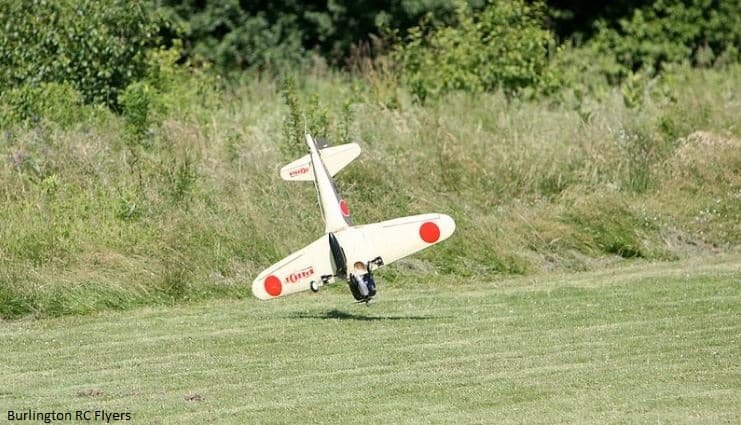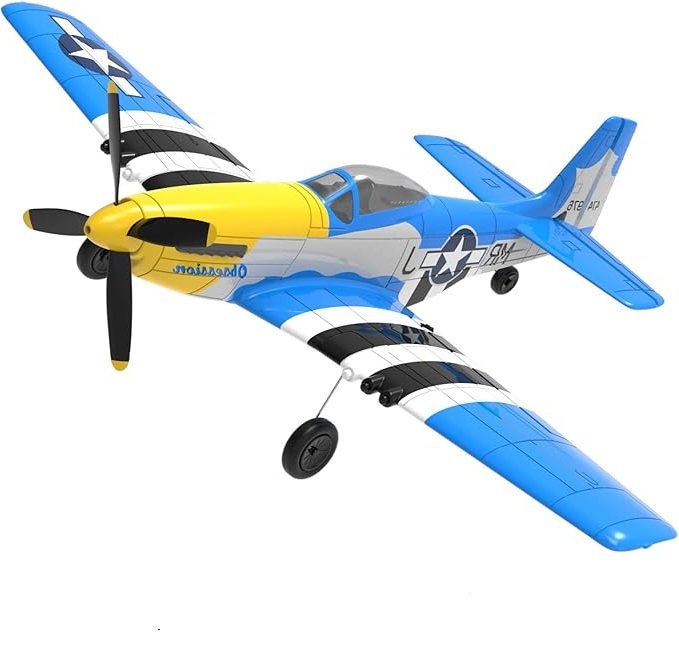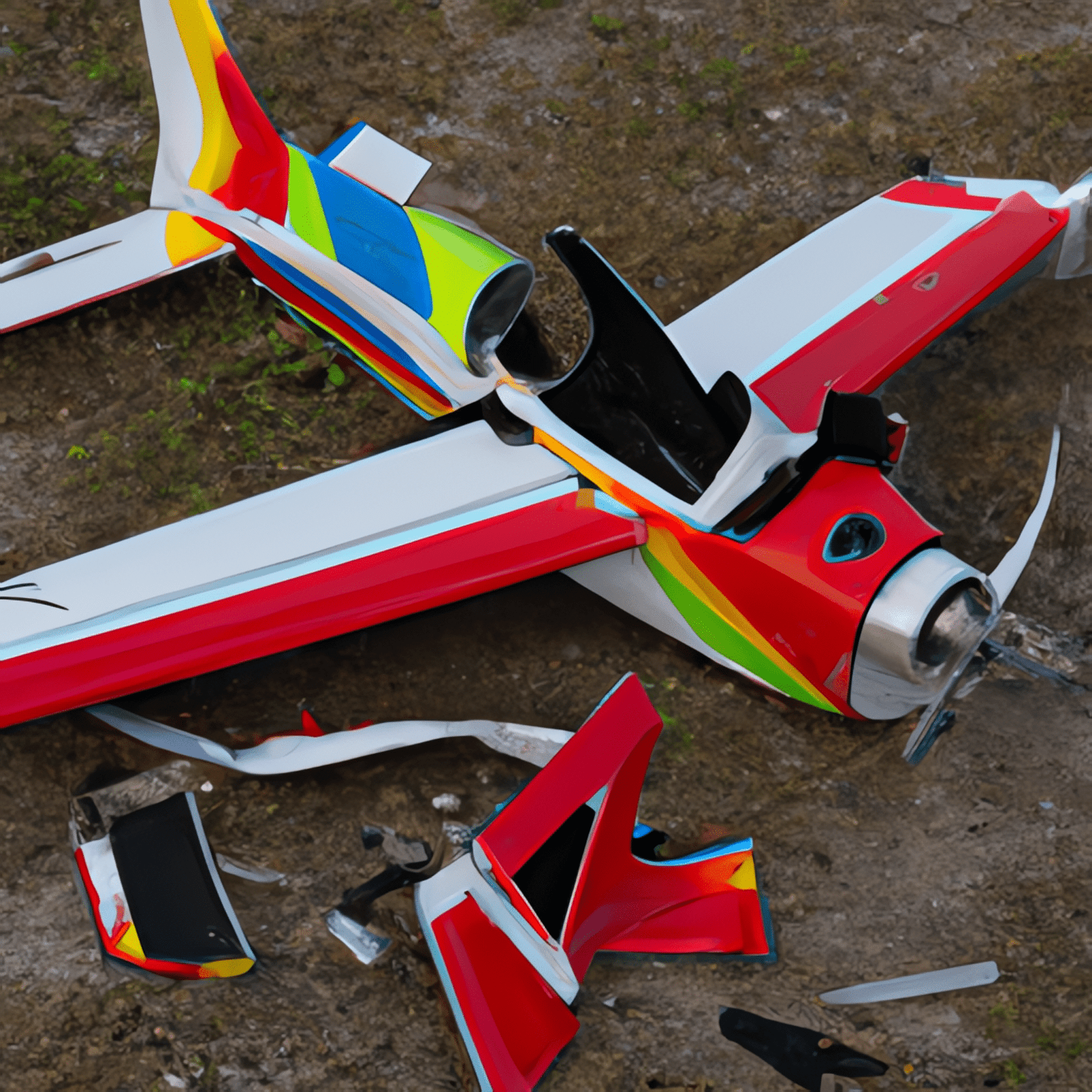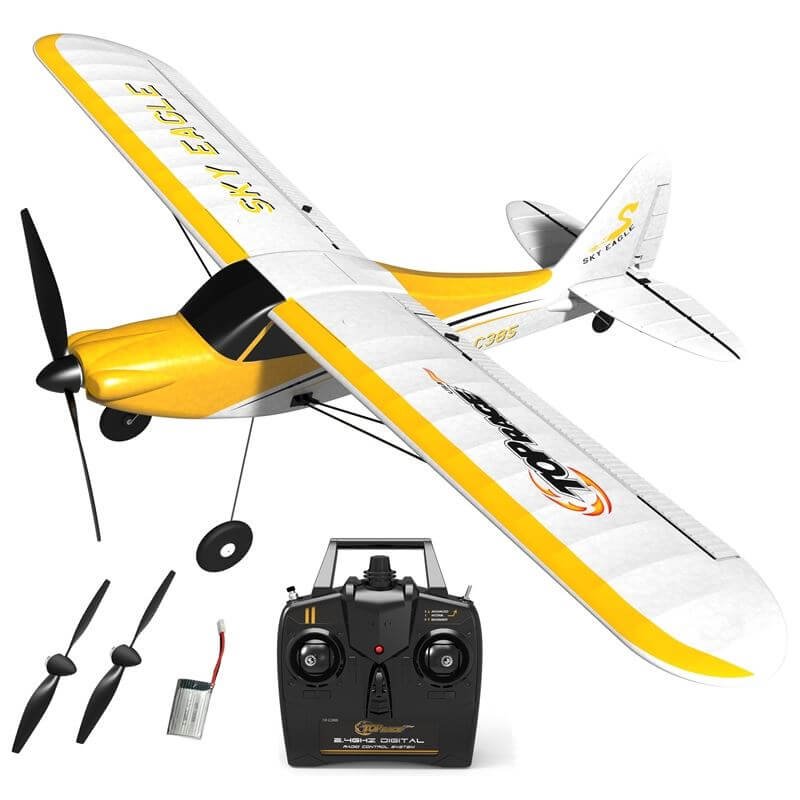With all the changes occuring to the rules and regulations for flying radio control models, including drones, do I need to get insurance to fly? I did quite a bit of research on this just in case I needed it, so read on to find out more, and discover a way of getting insurance on the cheap.
Insurance to cover flying a radio control plane or drone for pleasure is not necessary, nor compulsory in the US, Canada and the UK, but it is advised. Flying for commercial purposes, eg filming, requires insurance in Canada and the UK, but not the US.
Insurance may not be compulsory, so why might it be a good idea to get it? Read on to find out why you might sleep more peacefully (and fly more relaxed) if you do have it, and find out how you can get it at a bargain price.
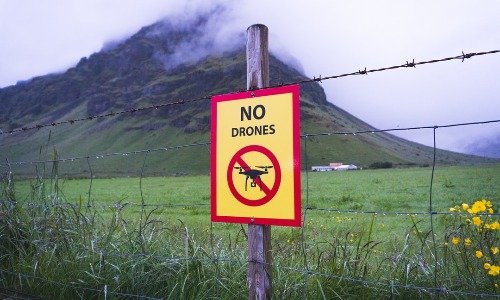
When you’ve read this, take a look at “Rules For Flying Model Aircraft And Drones In The US And UK”
Just starting out with RC Planes? Take a look at the latest recommended RTF (ready to fly) and easy-to-fly RC Planes, which will make getting into the air easy peasy and cheap – here.
Accidents Do Happen!
Major accidents among the RC Plane fraternity are rare thankfully – perhaps because much of the flying is done at regulated club sites – but the boom in drone flying has meant that there are many more opportunities for accidents to happen.
However, all it takes is a momentary loss of control – either through a malfunction in the radio equipment, adverse weather or loss of concentration – to end up with a large bill for property damage or worse, personal injury.
RC models can go fast – very fast. To find out just how fast, check out my article on RC Plane speed here. As a novice, you may be attracted by the draw of an rc jet.
Generally the faster they go, the more dangerous they can be.
But even at slow speeds the combination of a fast spinning prop with a model which can weigh up to 50 or 60 lbs can spell disaster in an accident.
Whilst accident statistics are difficult to come by, there is the occasional major accident reported over time, and probably many more minor, unreported ones.
Generally, flying accidents occur due to one or more of the following:
- Interruptions in the signal transmission
- Failure of the model construction in flight
- Pilot error
A researcher reported in 2006 an average of 1 fatality a year, but a significant number of injuries – mostly to the operators, also to “helpers” of inexperienced pilots doing hand-toss launches.
The most common reported injury (usually reported as treated at a hospital) is gasoline explosions- particularly in RC cars and boats.
But collision during aerobatics is the most common fatality, and the most common reported cause is interference on the radio frequency.
Here’s a short video of 2 crashes involving spectators (no one was seriously hurt in the incidents)
Occasionally there is a more serious accident. In 2006 a couple were killed in Hungary at an event where a large RC plane ploughed into the crowd. The model airplane that crashed had 6 1/2-foot wing span and was being directed from the ground by an experienced German flyer.
Reports suggested that the cause of the accident was loss of control due to radio interference.
The increasing popularity of drone flying has also brought woeful stories. In 2015 a toddler lost the sight in one eye as a result of a drone striking him. More can be read at Link 1. at the end of this article.
Les dramatic accidents may happen – for example you lose control of your rc model and damage a neighbor’s property.
Drone accidents are so common now that they are listed on a US site – see Link 2. at the end of this article.
Accidents don’t just happen in the air – they can happen on the ground in preparing for flight. A misplaced finger could easily come into contact with a spinning propeller.
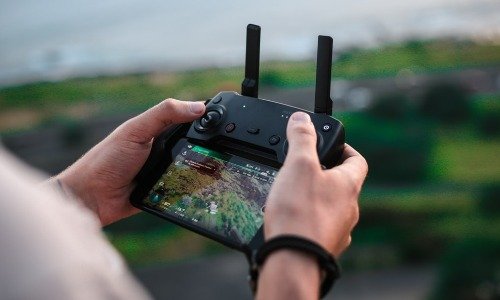
When you’ve finished this article, take a look at “Do You Need A Licence To Fly RC Planes?”
Insurance for Drones and RC Planes
Generally, you can obtain insurance to cover any costs arising from the loss or damage of the radio control plane or drone itself, any equipment associated with the aircraft, injury to you as operator, and from damage or personal injury to any third parties (for example injury to an observer as cited above).
Check Your Home Insurance Policy
With luck, you may already be covered by your home insurance policy.
Many home policies cover you for things which happen to you outside the home, so it’s worthwhile spending a few minutes checking your paper work. If you’re not sure, give the insurer a ring – you may get a pleasant surprise.
Things to check in particular in your home policy:
- Does your policy mention “toy”aircaft ot drones?
- Are there limits or exclusions related to your rc aircraft?
- Does your policy cover damage to your own property, as well as your neighbours’ or indeed anybody else’s property?
- Does it cover liability for personal injury to yourself and others?
- What are the deductables (or excess in the UK)?
- Is the coverage for “all risk coverage,” or is it only “named perils” such as fire, theft, and vandalism? If the latter, ask for a quote for all risks.
- Ask if you could schedule your drone on a special endorsement.
So what if your home policy either doesn’t cover your aircraft, or is too limited? You’ll need to look elsewhere. The rules and details differ between countries. Below is a summary for the US, and for the UK, but first an explanation of a term you may come across when you’re looking for insurance cover for your rc plane or drone, “Pay as you fly insurance”.
What IS Pay As You Fly Insurance
There are two ways of paying for drone insurance. The traditional, annual policy, or a new method is known as pay-as-you-fly (PAFL). This may well suit you if you just want the occasional afternoon’s flying.
Pay as you fly insurance provides cover for your drone or rc plane or helicopter when you need it – ie when you’re flying the model. Variations on this include cover per day or week. They are often associated with a smartphone app which can provide instant cover, costed according to your proposed flight plan and time.
Anyway, let’s look more closely at insurance cover for rc planes and drones in the US and the UK.
Insurance for Drones & RC Planes in the US
First off, you aren’t required to have insurance if you’re flying for pleasure or commercial purposes in the US.
But knowing the type of accidents that can happen, you might think it’s best to be safe rather than sorry.
There are a number of different types of insurance – liability, hull, and on-board equipment.
Optional extras include cover for aircraft theft, damage incurred by a third-party pilot, and loss of a plane or drone mid-air or in transit.
If you are a commercial operator of a drone (for example a wedding photographer), you may require special insurance to cover you in business.
Read on for an explanation of each.
What Is Liability Insurance For RC Models & Drones?
Liability insurance covers you for damages to other people’s property and injuries to other people. An injury to a spectator or an innocent bystander could land you with a bill for hundreds of thousands of dollars for medical bills, and even an unscheduled landing onto car’s roof could set you back a few thousand.
Liability insurance should also include cover for invasion of privacy claims – which might arise as a result of the use of a drone’s camera.
This type of insurance for recreational flyers is often expensive, to come by. Policies range from $500,000 coverage to up to $10m – ie you’re covered for claims against you up to those amounts. The greater the insured amount, the more expensive the insurance gets.
A cheaper, and frankly more sensible option, is to join the Academy of Model Aeronautics (AMA).
Free Liability Insurance
If you’re a member of the AMA, you’ll get free liability cover of $2.5m, $25,000 medical cover and $1,000 for vandalism, fire and theft.
Membership comes in at $75 per year and provides other benefits including a club magazine and being able to fly in certain locations off limits to others. To find out more, click on Link 3, at the end of this article.
However, what this doesn’t cover is the cost of your model if you damage it, or it’s stolen. For that you need hull insurance.
What Is Hull Insurance?
Hull insurance covers damage to the model or drone itself. This will provide for a wide range of eventualities, such as if you crash, or you lose control of your aircraft and it’s lost, or if it’s stolen.
And What Is On Board Insurance?
On board insurance covers you for damage or loss to any equipment carried by the rc model or drone, such as a camera.
Commercial Liability Insurance
Commercial liability insurance for radio control models is becoming more common with the increased popularity of drone flying for commercial purposes. For example in wedding photography drones are now regularly used for aerial shots of the happy couple and their guests.
You may find that a customer will require you to have liability insurance before giving you a contract. It is in their interests to make sure you are covered for any claims against them as a result of your work.
What Is The Cost of Drone or RC Plane Insurance in the US?
Drone and model aircraft insurance can be obtained in the USA for anything from $5 per flying hour up to $350 per year, including liability and hull insurance.
As with all types of insurance, if you pay enough, you’ll get the insurance you need. However, to state the obvious, you should weigh up the benefits against the costs, so ask yourself if it’s worth it. Paying $100 per year for hull insurance for an aircraft which costs $100 is plain dumb. However, it may be worth paying $100 for a model which is worth $1000.
As a recreational flyer, you probably couldn’t do better than to join the AMA (see above), as it will only cost you $75 a year to get a generous level of liability cover at $25m, plus other benefits.
In addition, you may want to look for hull insurance if your model is expensive. Cover can be obtained on an hourly or per flight basis, as well as monthly and annually. From our enquiries with insurance companies and brokers, expect to pay upwards of $5 per flight hour, or $23 per month.
For commercial flying, expect to pay anything from $350 per year.
Where Can I Get Insurance for My Drone or RC Plane in the US?
We had a look around to see where we could get hull insurance for our RC model, and what we found was surprising. Most of the insurance companies we approached promoted drone insurance, but didn’t mention rc planes or helicopters. However, it is worth checking if these contacts can find suitable insurance for rc planes and helicopters.
Here’s a selection of companies and brokers providing off the shelf and tailored insurance for radio control aircraft and unmanned arial vehicles:
Insurance for Drones & RC Planes in the UK
As stated above, it is always wise to initially check your home insurance policy, as it may provide insurance cover for some aspects of your rc plane or drone use, for example theft of your aircraft whilst it’s in your home, and third party insurance in case you crash into a neighbour’s car.
However, look out for any limits or exclusions included in your home policy. It may exclude you from liabilities incurred outside the curtiledge of your property.
Third Party or Civil Liability Insurance for Drones and Model Aircraft
Injury to other people and damage to other people’s property is covered under this heading.
British Model Flying Association Insurance
The first port of call for this type of insurance should be the British Model Flying Association (BMFA). This provides up to £25m for third party incidents, which is included in the £38 joining fee. For further details, click link 4 at the end of this article.
If you are a member of a club affiliated with the BMFA, club liability insurance can be extended to cover first time visitors to the club who have no previous experience of model flying but are seeking to try out model flying prior to joining the club.
One particularly good aspect of the BMFA insurance is that it will cover you even if you’re not flying at a club field.
However, do remember that it won’t cover you for theft or damage of your model.
Can I Get Insurance For Theft, Damage Or Destruction Of My Model?
Included in the BMFA insurance are incidents where a third party (ie another person) destroys your rc model, but not, unfortunately, if you happen to crash, or damage it.
We found there was no easy route to obtaining insurance for radio control model damage. Probably the best way of obtaining insurance is to go to a specialist broker, such as Walker Midgely, and Highworth Insurance and discuss your specific circumstances.
Another possibility is to go to a specialist drone insurer. These often arrange damage insurance for both drones and other rc aircraft. One such is the Drone Cover Club, which can arrange cover for as little as £29.95 per year.
For beginner models, which are likely to be of modest cost, all this is probably not too worrying, but for more expensive, advanced models, that may be a problem. But, by the time you’ve worked your way up to an expensive model, you should be a competent flyer and suffer accidents less frequently!
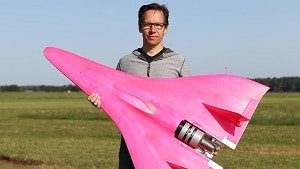
Now you’ve read this, check out “How Fast Do RC Planes Go?”

